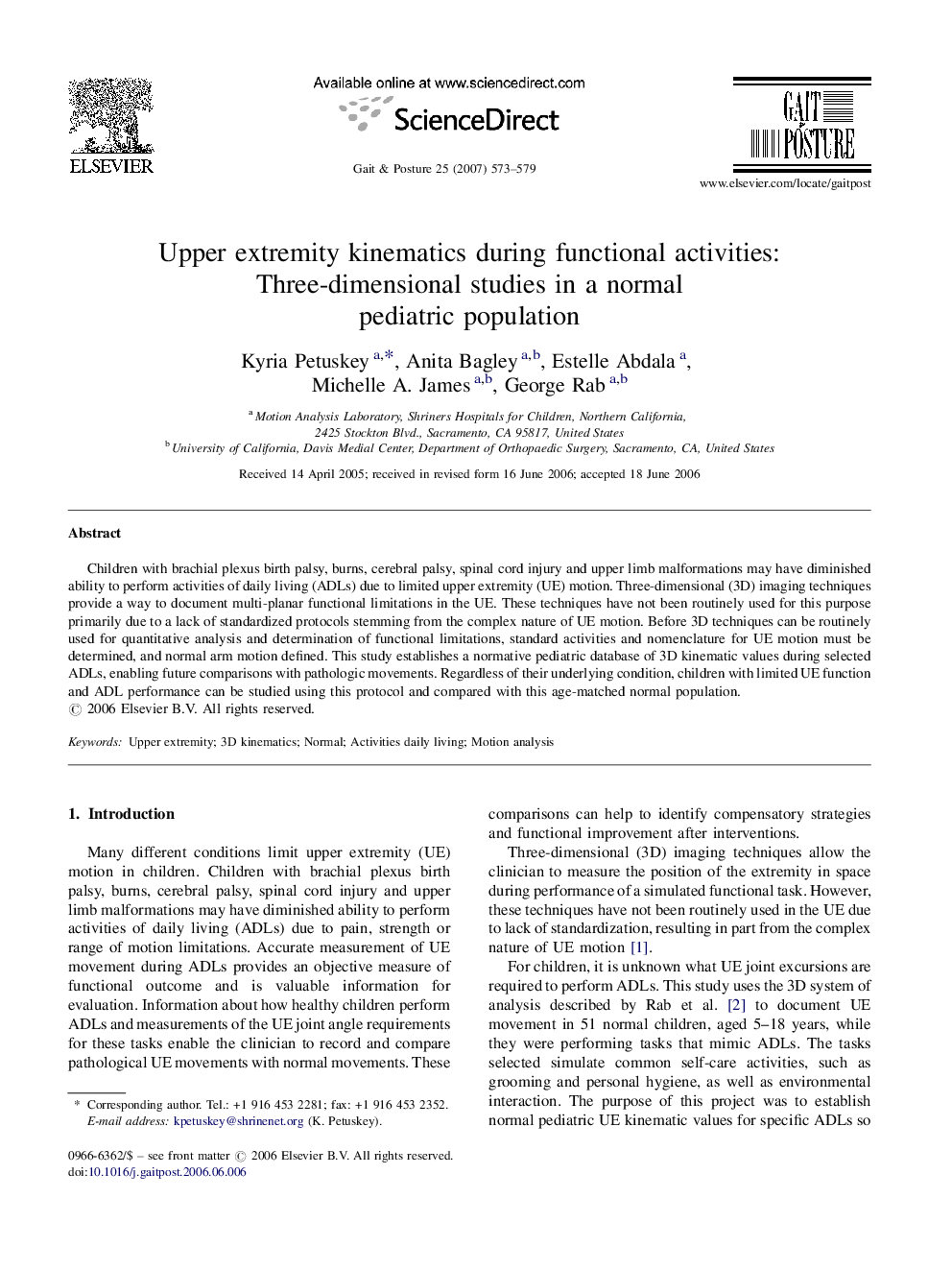| Article ID | Journal | Published Year | Pages | File Type |
|---|---|---|---|---|
| 4058032 | Gait & Posture | 2007 | 7 Pages |
Children with brachial plexus birth palsy, burns, cerebral palsy, spinal cord injury and upper limb malformations may have diminished ability to perform activities of daily living (ADLs) due to limited upper extremity (UE) motion. Three-dimensional (3D) imaging techniques provide a way to document multi-planar functional limitations in the UE. These techniques have not been routinely used for this purpose primarily due to a lack of standardized protocols stemming from the complex nature of UE motion. Before 3D techniques can be routinely used for quantitative analysis and determination of functional limitations, standard activities and nomenclature for UE motion must be determined, and normal arm motion defined. This study establishes a normative pediatric database of 3D kinematic values during selected ADLs, enabling future comparisons with pathologic movements. Regardless of their underlying condition, children with limited UE function and ADL performance can be studied using this protocol and compared with this age-matched normal population.
